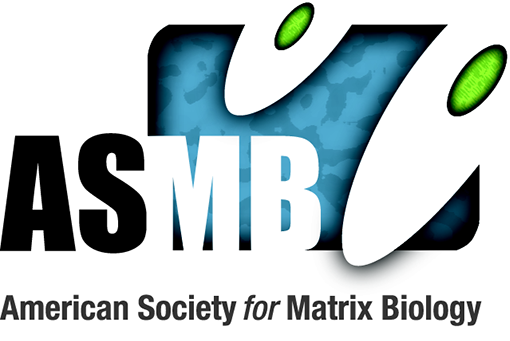Guest Societies and Special Interest SessionsGuest SocietiesASMB is pleased to welcome the following Guest Societies and Special Interest Sessions at the ASMB Biennial Meeting. The detailed schedule of speakers can be found in the ASMB Program. Sunday, September 12 Guest Symposium I: Multiple Functions of the ECM in Glaucoma Co-Chairs, Kate E. Keller, PhD Oregon Health & Science University and Donna M. Peters, PhD University of Wisconsin- Madison. Glaucoma is the second leading cause of blindness in the world. Since pathogenic changes in the ECM are observed in both anterior (trabecular meshwork) and posterior (lamina cribrosa) eye tissues, changes in the ECM are considered to be a primary risk factor for the development of glaucoma. In this session, we will describe how alterations in various extracellular matrix components contribute to glaucoma. In our presentations, we will discuss the pro and cons of the various theories about how ECM functions in the anterior and posterior eye.
Guest Symposium II: The Histochemical Society: ECM in the time of COVID The Interactome of Glycosaminoglycans: from Interactions to Functions, Sylvie Ricard-Blum, University Lyon, Institute of Molecular and Supramolecular Chemistry and Biochemistry The Indispensable Role of ECM Proteolysis in Embryogenesis, Suneel Apte,Cleveland Clinic Lerner Research Institute Talk title tba, Claudia Kemper, DIR, NHLBI, NIH
Sunday, September 12, 2:45pm SIS 1: Not Just Tissue Inhibitors of Metalloproteinases (TIMPs) Organizer: David Peeney, National Cancer Institute Tissue inhibitors of metalloproteinases (TIMPs) are a family of endogenous proteins that were initially defined by their ability to inhibit the enzymatic activity of matrix metalloproteinases (MMPs), the major mediators of extracellular matrix (ECM) breakdown and turnover. In turn, this function of TIMPs makes them important regulators of ECM structure. However, since their original discovery additional MMP-independent functions have been attributed to TIMP family members leading to their designation as multifunctional proteins, with discrete functional domains. However, despite their multi-functional abilities, TIMPs are routinely confined to the ontology of metalloproteinase inhibition by researchers. The aim of this Special Interest Session is to provide a deeper insight into the biological activities of TIMP family members, and how their regulation and therapeutic targeting can modulate ECM structure and function. Monday, September 13, 4:30pm SIS 2: Novel Regulators of Vascular Remodeling and Matrix Assembly Organizer: Matthew Scott, LSU Shreveport Extracellular matrix structure and composition regulates multiple aspects of cardiovascular function, including vascular development, tissue remodeling, and pathogenic changes in cell phenotype. For instance, fibronectin deposition has been observed in atherosclerosis-prone regions of the aorta and carotid arteries, where it is involved in the inflammatory response. Fibronectin has also been detected within atherosclerotic plaques, where it is deposited by vascular smooth muscle cells in a manner regulated by EphA2, a receptor tyrosine kinase. Matrix assembly/disassembly is a complex process involving a variety of proteins, including matricellular proteins (i.e. thrombospondins) and metalloproteases (i.e. ADAMTS family). This special interest session will explore some of the novel regulators of vascular ECM remodeling and matrix assembly. Tuesday, September 14, 2:30pm Guest Symposium III: Tissue Engineering International and Regenerative Medicine Society (TERMIS) Americas TERMIS brings together the international community of persons engaged or interested in the field of tissue engineering and regenerative medicine, promoting International Education and Collaboration for the Advancement of Tissue Engineering & Regenerative Medicine. This TERMIS-sponsored session will feature young and international scholars that work at the interface of tissue engineering and matrix biology. Topics covered will have a range of applications but will focus at this interface. More information on the session coming soon. Wednesday, September 15, 11:30am SIS 3: ECM Characterization Modalities Organizers: Lauren Schmitt and Maxwell McCabe, University of Colorado Anschutz Medical Campus The extracellular matrix (ECM) governs a wide range of biological processes including cell differentiation, wound healing, and fibrosis. Knowledge of ECM composition and architecture is critical to fields ranging from biomedical to biomaterials science. However, due to the high degree of modification and insolubility of most ECM proteins, data regarding the ECM proteome is sparse. This session will address new techniques and tools that have been developed to provide improved analysis of the ECM. Several speakers will focus on mass spectrometry-based analysis of the ECM while others will focus on IHC and bioengineering approaches. |
